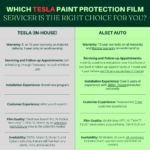Table of Contents
Cleaning Windows
Keeping the windows of your vehicle clean is not just about visibility; it’s also about maintaining the pristine look of your vehicle’s interior. Here’s how to effectively clean the interior side of your car windows:
Materials Needed
- Microfiber towels (preferably two – one for cleaning, one for drying).
- Window cleaner (ensure it’s ammonia-free, especially if your car has tinted windows).
- Distilled water (optional, for diluting the cleaner if it’s too strong).
Method
- Preparation: Start by choosing a window cleaner that is safe for automotive use. Ammonia-based cleaners can damage window tints and other interior materials, so it’s crucial to use an ammonia-free product.
- Initial Wipe: Begin by wiping the window with a dry microfiber towel to remove any dust or loose particles. This helps prevent scratching the glass during the wet cleaning process.
- Applying Cleaner: Spray the window cleaner onto the microfiber towel rather than directly onto the glass. This prevents the cleaner from contacting and potentially damaging the vehicle’s interior surfaces.
- Cleaning: Wipe the window in a top-to-bottom or side-to-side motion. Be sure to reach the corners and edges where grime often accumulates. For tough spots, such as fingerprints or water spots, you may need to apply a bit more pressure or reapply the cleaner.
- Drying and Buffing: After cleaning, use a fresh, dry microfiber towel to dry the window. This will prevent streaks and ensure a clear, streak-free finish. Buff the glass with this dry towel to achieve a polished look.
- Regular Maintenance: Regularly cleaning your windows as part of your interior maintenance routine will keep them looking clear and reduce the buildup of grime over time.
Additional Tips and Notes
- Avoid cleaning your windows in direct sunlight or high temperatures, as this can cause the cleaner to evaporate quickly and leave streaks.
- If you have tinted windows, confirm that the cleaning products you use are tint-safe. Ammonia-based glass cleaners such as Windex are not suitable for tinted windows.
- For an eco-friendly option, a mixture of distilled water and white vinegar can be an effective natural window cleaner.
- Using newspaper to clean car windows is an old-school method known for its effectiveness in achieving a streak-free finish, as the ink acts as a mild abrasive. However, it carries the risk of ink transfer to hands and car interiors, and may not be suitable for tinted or specially coated windows due to potential scratching. In today’s context, microfiber towels are a safer and more environmentally friendly alternative, offering lint-free, absorbent, and scratch-free cleaning, making them a preferred choice for maintaining the clarity and integrity of car windows.
- Windex, or similar ammonia-based glass cleaners, should be used cautiously on car windows. It’s safe for non-tinted windows and effective in removing marks for a streak-free finish. However, it’s not suitable for tinted windows, as ammonia can damage the tint film. Additionally, avoid using Windex on interior surfaces and touchscreens, as it can harm anti-glare and anti-fingerprint coatings. For these areas, and especially for tinted windows, opt for ammonia-free, automotive-specific window cleaners to prevent potential damage to your car’s interior and exterior surfaces.
Recommended Products For Window Cleaning
Exterior Cleaning: Keeping Your Vehicle Shining
Regular Washing: The Key to a Gleaming Exterior
- Frequency: Aim to wash your vehicle every two weeks. If you’re driving in harsh conditions (like salty roads in winter), consider washing it more frequently to prevent corrosion.
- Tools and Products: Use a gentle, automotive-specific soap. Avoid household detergents as they can strip the protective coating off your car. Soft microfiber towels and a separate bucket for wheels and tires are recommended to avoid scratching the paint.
- Technique: We cover all the different types of car washes and their techniques in our guide on Choosing the Right Car Washing Method For Your EV.
- Car Wash Precautions: We cover precautions and PPF/ceramic coating compatibility for all types of car washes in our guide on Choosing the Right Car Washing Method For Your EV.
- Tip: Ceramic Coating adds a hydrophobic (water-repellent) layer creating a long-term glossy shine to your vehicle, enhancing its appearance and making it easier to clean and less prone to staining. It’s like wax, but ceramic lasts up to 5 years!
Dealing with Contaminants
- Bird Droppings and Tree Sap: Remove these as soon as possible as they can etch the paint. Soak the area with a water-dampened cloth, then gently wipe away.
- Tar and Road Grime: Use a tar remover product and follow the instructions carefully. Avoid scrubbing harshly, which can damage the paint.
- Tip: Paint protection film (PPF) acts as a barrier against all contaminants, keeping your vehicle’s paint pristine for years to come.
Scratch-Free Tips
- Avoid automatic car washes with brushes. Opt for touchless car washes if hand washing isn’t an option.
- Never wipe your car with a dry cloth; always ensure it’s lubricated with water or a quick detailer spray.
- Tip: Paint protection film (PPF) has self-healing properties that allow minor scratches to disappear with heat exposure.
Recommended Products For Exterior Cleaning
We cover all the recommended products with clickable links for cleaning the exterior in our guide on Choosing the Right Car Washing Method For Your EV.
A Note on Wax Products
If your vehicle has Paint Protection Film (PPF) or a ceramic coating, here’s what you need to know about using wax:
Wax and PPF:
- Not Really Needed: Modern PPFs already have a glossy and hydrophobic layer, much like what wax offers.
- Be Careful: Avoid abrasive waxes or those with harsh chemicals. They can damage or discolor the PPF.
Wax and Ceramic Coatings:
- Skip the Wax: Ceramic coatings are more durable and offer better protection and gloss than wax.
- Potential Issues: Waxing over ceramic coatings can reduce their effectiveness, especially in repelling water and dirt.
In general, follow manufacturer guidelines and stick to care instructions from the manufacturer or installer for PPF and ceramic coatings. Use products specifically made for PPF and ceramic coatings. The Cyber Trio Pack for ALSET Auto customers includes Cyber Soap With Gloss Enhancers, Cyber Slick Ceramic Topcoat, and Cyber Seal Interior Protectant – perfect for maintaining your vehicle’s shine and protection.
Interior Maintenance: A Clean and Comfortable Cabin
Cleaning Different Interior Materials
- Vegan Leather Seats: Use a vinyl cleaner to keep the vegan leather supple. Apply the cleaner with a microfiber cloth, then use a separate cloth for protectant products. Avoid using cleaners and conditioners meant for real leather.
- Fabric Carpets: Vacuum regularly. For stains, use a fabric cleaner, apply it to the area, and gently dab with a microfiber cloth.
- Plastic and Trim: Wipe down with a mild cleaning solution and a microfiber cloth. Avoid using harsh chemicals that can cause fading.
Electronic Components and Screens
- Use a microfiber cloth slightly dampened with water or an electronic-safe cleaner. Avoid spraying anything directly onto screens or buttons.
- In Teslas, turn on Screen Clean Mode before cleaning the screen.
- Go to Controls > Display > Screen Clean Mode
DIY Solutions for Stains and Odors
- Stains: Mix a solution of water and mild soap. Apply it to the stain and blot with a microfiber cloth. For tougher stains, a mixture of baking soda and water can be effective.
- Odors: Leave an open box of baking soda in the car overnight to absorb odors. For persistent smells, consider a car-specific odor eliminator.
Caution: Alcohol to Clean Your Vehicle’s Interior
You might have heard about using alcohol-based cleaners for a quick fix, but hold up – it’s not the best idea for your vehicle’s interior. Here’s why alcohol can be a bad idea:
- Damage to Materials: Many of the surfaces inside your vehicle, like the touchscreen, dash, and other delicate areas, can be damaged by alcohol. It can cause discoloration, drying out, and even cracking over time.
- Safety of Coatings: Your vehicle’s interior isn’t just any old material; it’s engineered for durability and aesthetics. Alcohol can strip away protective coatings, leaving surfaces more vulnerable to wear and tear.
- Effect on Touchscreens: The centerpiece of your vehicle’s interior, the touchscreen, needs special care. Alcohol can degrade the anti-glare and anti-fingerprint coatings, making your screen less responsive and harder to read.
Recommended Products For Interior Cleaning
- Cyber Seal – a proprietary ceramic-infused interior detailer spray made just for EVs. Included complimentary with ALSET Auto PPF and Ceramic Coating services.
- CAR GUYS Super Cleaner For Interiors
- 303 Products Multi-Surface/Vinyl Protective Cleaner For Interiors
- 303 Products Restoration and UV Protectant For Interiors
- Handheld Car Vacuum Cleaner and Air Duster-in-One
- Ammonia-Free Window and Windshield Cleaning Kit
- Microfiber Cleaning Cloths



Leave a Reply